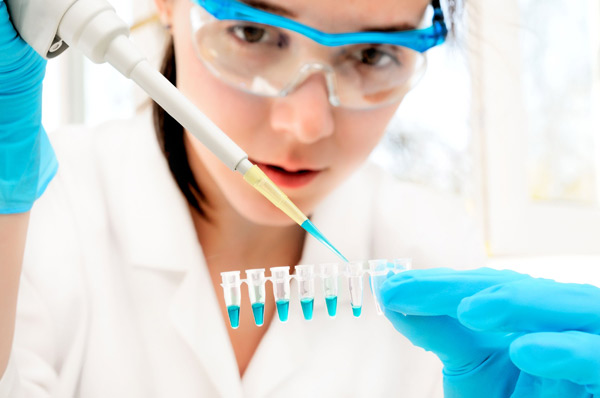
A novel therapy that would allow doctors to turn the body’s blood-clotting ability off and on in a more controlled way was about as effective as established anticoagulants in patients undergoing angioplasty but was associated with higher rates of moderate to severe bleeding, according to an analysis of data from a terminated Phase III trial presented at the American College of Cardiology’s 64th Annual Scientific Session. The study was officially halted in August due to an excess of severe allergic reactions, so authors caution that the data should be considered exploratory given the early termination.
Before the trial was stopped, 3,232 patients undergoing angioplasty, a procedure to open blocked coronary arteries, were enrolled in the study at 225 hospitals in 17 countries including North America and Europe. The study was designed to compare the safety and efficacy of the REG1 Anticoagulation System and bivalirudin–a commonly used anticoagulant–in a total of 13,200 patients. Patients were equally randomized to the bivalirudin or REG1 in an open-label fashion and data was collected at three and 30 days.
No differences were found between patients receiving REG1 compared to bivalirudin in terms of the study’s primary efficacy endpoint–a composite of all-cause death, heart attack, stroke or urgent revascularization, which was reported in 6.7 percent of patients in the REG1 arm and 6.4 percent of patients receiving bivalirudin three days after angioplasty. Efficacy was still comparable at 30 days.
The REG1 system failed to show a benefit in the primary safety endpoint of bleeding compared to bivalirudin. Using a validated bleeding scale, patients receiving REG1 had a 0.4 percent rate of severe or fatal bleeding compared to 0.1 percent with patients who were given bivalirudin for anticoagulation. Moderate to severe bleeding was significantly higher in the REG1 group compared with bivalirudin.
Serious allergic reactions were seen in 10 out of 1,605 patients in the REG1 arm, one of which was fatal and the others were anaphylactic reactions. Only one patient in the bivalirudin group had a serious allergic event.
“This anticoagulant system is associated with infrequent but an unacceptably high rate of severe allergic reactions,” said Roxana Mehran, M.D., director of Interventional Cardiovascular Research and Clinical Trials at Mount Sinai Heart at The Mount Sinai Hospital and professor of Medicine in Cardiology at Icahn School of Medicine at Mount Sinai, and one of the principal investigators of this trial. Research is ongoing to determine the exact cause of the allergic reactions, and Mehran said she hopes this does not deter the search for novel anticoagulants for use in this patient population.
When patients undergo angioplasty, they need medications to thin the blood to prevent clots from forming in the coronary artery, which can result in stroke, heart attack, repeat procedures or even death, but physicians must balance preventing blood clots with the risk of potentially dangerous bleeding.
“It’s the Achilles’ heel in cardiovascular medicine–how do we protect patients against any kind of blood clotting without exposing them to a higher risk of bleeding?” Mehran said. “We are constantly refining the antithrombotic therapies we use during PCI, and this seemed promising.”
More than 1 million people in the United States undergo angioplasty each year. Roughly 0.6 to 4.8 percent of these people will die, 0.2 percent will suffer a stroke and up to 6 percent will suffer vascular complications in hospital. About 5.8 percent of people will also suffer bleeding related complications within 72 hours of angioplasty.
Mehran said the ideal anticoagulant is one that works fast, has a predictable dose and can efficiently stop clots from forming on top of catheters, but it can also be quickly reversed. Blood clotting in the body is regulated by a set of proteins in the blood, called coagulation factors, and platelets. The REG1 system uses a molecule called pegnivacogin that binds to the blood coagulation Factor IXa receptor to deactivate blood clotting, and anivamersen, an active control agent that rapidly reverses the anticoagulant effect to quickly help return blood clotting activity to normal.
“Within seconds of giving the reversal agent anticoagulation is nearly completely reversed because it looks for its friend and grabs it off the receptor immediately,” Mehran said. “With a technique like this, we could provide blood thinning as needed and then take it away immediately after finishing angioplasty.” But, she said, further improvements are needed in its safety profile.
Researchers started recruiting patients in September 2013. In April, because there were a handful of allergic reactions seen in the earlier Phase II trial, all of the safety endpoints for the first 1,000 patients were carefully reviewed by the Data Safety and Monitoring Board, Mehran said. But in June both the executive committee and the sponsor decided to suspend the trial, and upon adjudication of events, the trial was permanently halted in August. Patients who had a heart attack within 48 hours of angioplasty, had contraindications for anticoagulation, were at high risk of bleeding, or had an allergy or intolerance to aspirin or certain other inhibitors were excluded from the study.
The study done by American College of Cardiology.